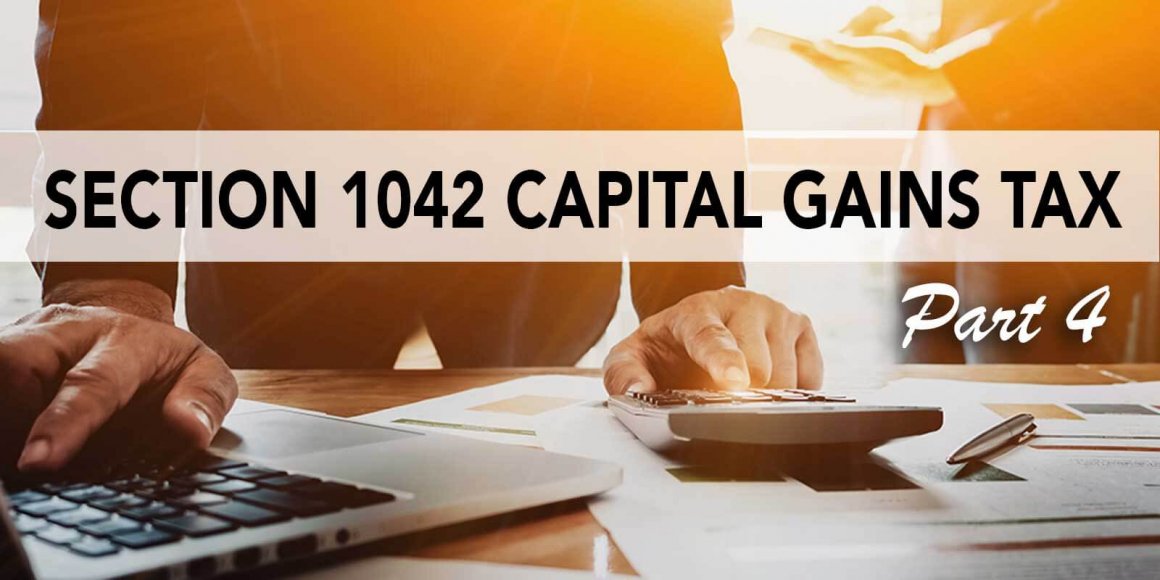Defer Long Term Capital Gains Taxes: QRP & Floating Rate Notes [Part 4]
This is the fourth article in a five part series that reviews the Section 1042 Capital Gains Tax Deferral alternative with respect to ESOP structures.
Floating Rate Notes as QRP
A major concern of most investors in Qualified Replacement Property (QRP) is how to protect the principal value of the investment, given the value of the financial assets will fluctuate as interest rates and market conditions change. One possible solution to this concern is the use of long-term floating rate notes (“FRNs”). These FRNs are long-term floating rate note (debt) obligations of very highly credit rated entities. Because the interest rate floats with changes in market conditions, the principal value will approximate 100% of par value at all times.
The exception to this rule of thumb is when the credit profile of the underlying issuer changes. In that case, it is possible for the principal value to decline if rates increase to the level that investors believe there is a concern. If the issuer’s financial performance declines to the point where investors believe its continued existence is at risk, the normal rules will not apply and the principal value of the securities will decline.
The QRP Liquidity Decision
The decision the seller faces is whether to pay the potential negative carry (net out of pocket cost on the margin loan, defined as the interest paid on the margin loan compared to the interest income received on the investment) on the margin loan or pay the capital gains tax on the proceeds from the sale. Assuming zero basis in the stock, the capital gains tax on a $20m sale, at the previous 20% combined Federal and state tax rate level, would be $4 million. Under the current combined Federal and state tax rate of approximately 30%, the capital gains tax would be $6 million. To put the comparison in perspective, at the 30% capital gains tax level, the seller could pay a negative carry of 1.5% for over 22 years before it exceeded the amount of the capital gains tax that would be due at closing without the Section 1042 deferral. As a result of the increase in capital gains tax rates, we expect the use of Section 1042 to increase significantly going forward.
When is Section 1042 Appropriate?
As outlined previously, the Section 1042 deferral is available only to selling shareholders of C-Corporation stock, where the initial sale transaction involves at least 30% of the value of the company. It is most appropriate where the seller has the ability to utilize the sale proceeds or a portion of them to invest in QRP without creating personal illiquidity. The margin loan structure is one way of implementing the structure while still creating liquidity.
It is also important to understand that the decision to take advantage of Section 1042 is not an “all or nothing” proposition. The seller may elect to take Section 1042 treatment for all or some of the proceeds resulting from the sale of the business. There is nothing that would prohibit a seller from electing Section 1042 treatment for half of the sale proceeds and paying the appropriate capital gains taxes on the other half. This hybrid structure can provide increased flexibility with respect to the use of proceeds, but at a higher cost to the seller in terms of taxes paid.
Our next entry will discuss the elimination of capital gains taxes using the Section 1042 structure, as well as providing an overview of the difference between C-Corporations and S-Corporations with respect to Section 1042.
CIRCULAR 230 NOTICE AND DISCLAIMER
The material contained herein: (i) is not an offer to sell or the solicitation of an offer to purchase an interest in any security, (ii) is not an offer to lend or a commitment to provide capital or financing, and (iii) is not accounting, investment, legal or tax advice. Butcher Joseph Hayes LLC and its employees do not offer accounting, investment, legal or tax advice. You must consult with your accounting, investment, legal or tax advisors regarding your specific circumstances. This material cannot be used for the purpose of avoiding penalties that may be imposed under tax laws. The information contained herein is provided for illustrative informational and discussion purposes only and may not be relied upon in any manner as accounting, investment, legal, or tax advice. All information with respect to companies and industry data have been obtained from sources believed to be reliable and current, but accuracy cannot be guaranteed. In regard to any performance information contained herein, past performance is no guarantee of future results and there can be no assurance that future investments will achieve comparable results. Butcher Joseph Hayes, its affiliates and their respective employees may receive compensation for providing various products or services discussed herein. Butcher Joseph Hayes offers securities through an affiliated entity: Southeastern Capital Partners BD, Inc., member FINRA.
ADDITIONAL RESOURCES


